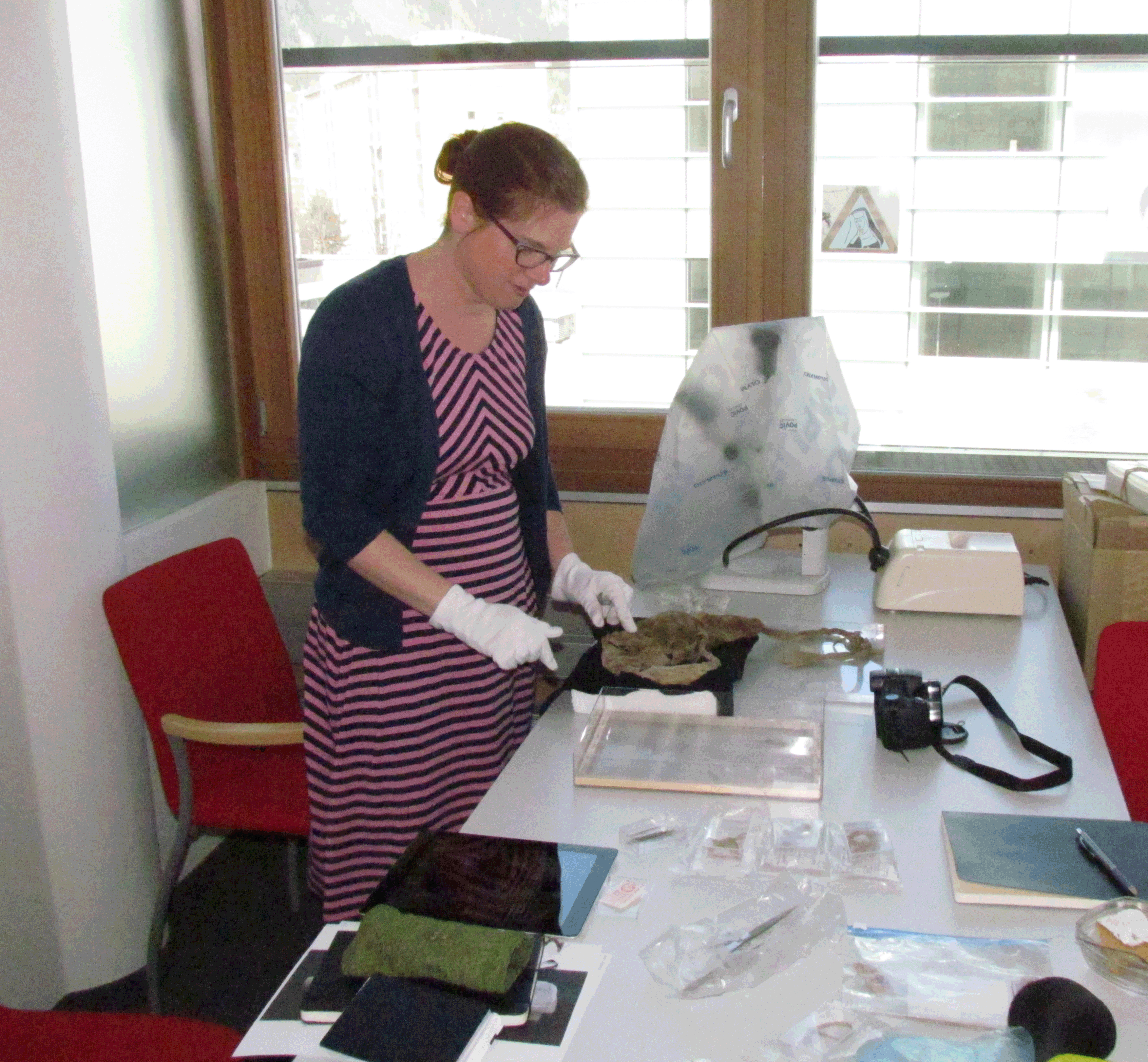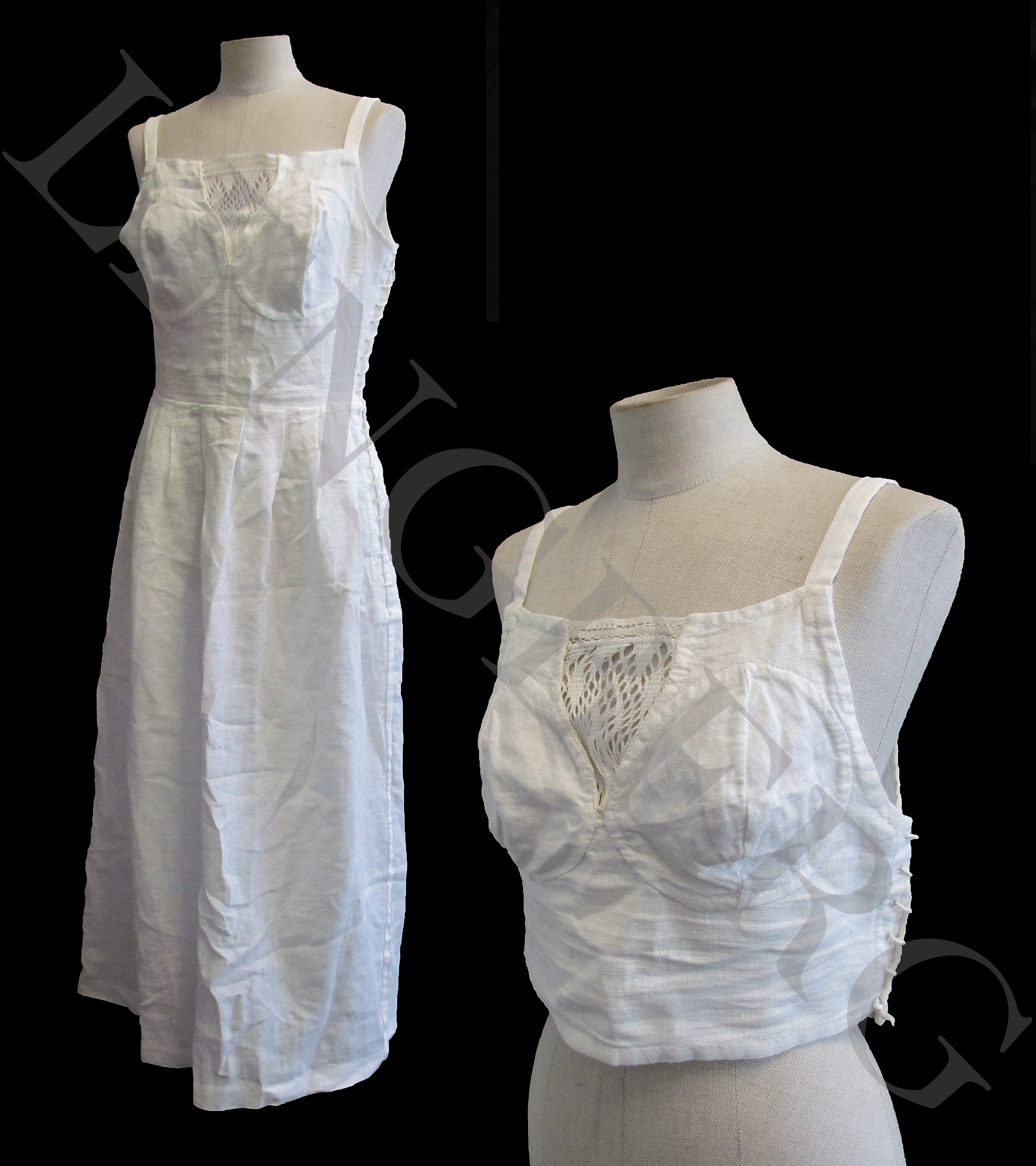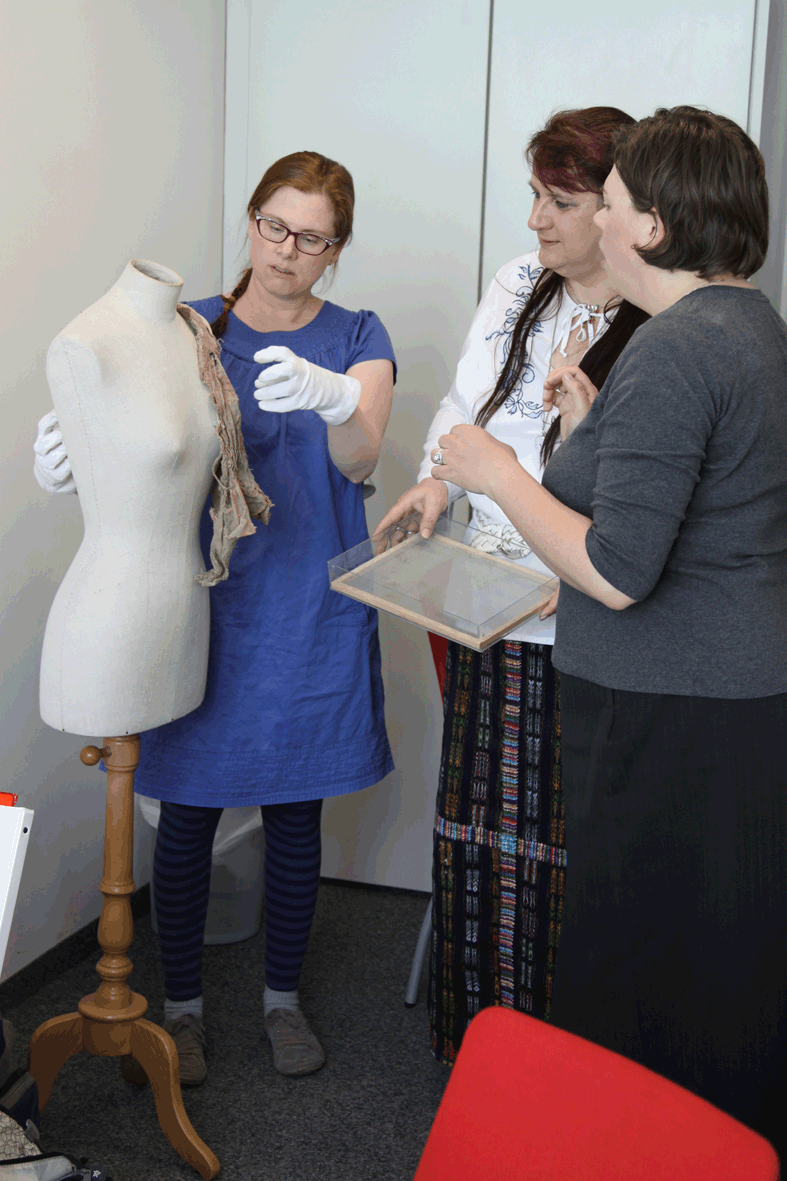Projects and Science
Reconstruction of the 15th century “bras” from Lengberg Castle in East Tyrol
ABT
From April 21 to 29, 2015 Rachel Case from Maine, USA, visited the Institute of Archaeology of the University of Innsbruck. Together with Beatrix Nutz she studied the textile finds from Lengberg Castle, notably the bras and the corset. Based on these studies Rachel Case will tackle detailed reconstructions of the garments. The results of this investigation and the knowledge gained from the reconstructions will be published in a cooperative effort by Beatrix Nutz and Rachel Case.

Rachel Case examining the “bra” with the sprang between the cups.
In order to cover for the expenses of this project Mrs. Case has been granted the Janet Arnold Award1 by the Society of Antiquaries in London.
These grants are awarded to support research into the history of Western dress.
The first attempt at reconstruction was the so-called "longline" bra, which Rachel Case was tailoring one with and one without skirt. However, since this took place before her visit to Innsbruck, these pieces are still lacking in detail.

„Longline“ BH with (left) and without (right) skirt.
And here is how she did it: Crafty Agatha (together with other works)
On Friday 24 April, Mrs. Marion McNealy from Stuttgart joined the two researchers in order to take a closer look at other extant garments from Lengberg (two girls dresses and the dress of an adult female). A future cooperation of the Institute of Archaeology of the University of Innsbruck with Mrs. McNealy in order to reconstruct these garments too was discussed.
Marion McNealy is currently working on publishing the book “Drei Schnittbücher: 3 16th c Austrian Master Tailor Books”.

From left to right: Rachel Case, Beatrix Nutz and Marion McNealy studying the dress of an adult female.
Video-portrait of Rachel Case: In(n)ternational - Menschen, Sprachen und Kulturen im Fokus
Press:
- "Dessous aus dem 15. Jahrhundert unter der Lupe", Tiroler Tageszeitung 8. April 2015
- " Geld aus London ermöglicht archäologische Textilien-Forschung", Osttiroler Bote 7. Mai 2015
1Janet Arnold (1932–98) was an artist, teacher and fashion designer. Her practical skills, together with a passion for accuracy, made her a powerful advocate for the study of historical dress as a serious discipline. The use of archival material and visual and literary records are important, but as she demonstrated in her own work, a real comprehension of historical dress depends on the close examination and understanding of surviving garments, both whole and fragmentary.